September 2018 Cultural Events Barcelona
MUSIC AND
PERFORMING ARTS
MUSIC AND PERFORMING ARTS
01 / 09 / 18
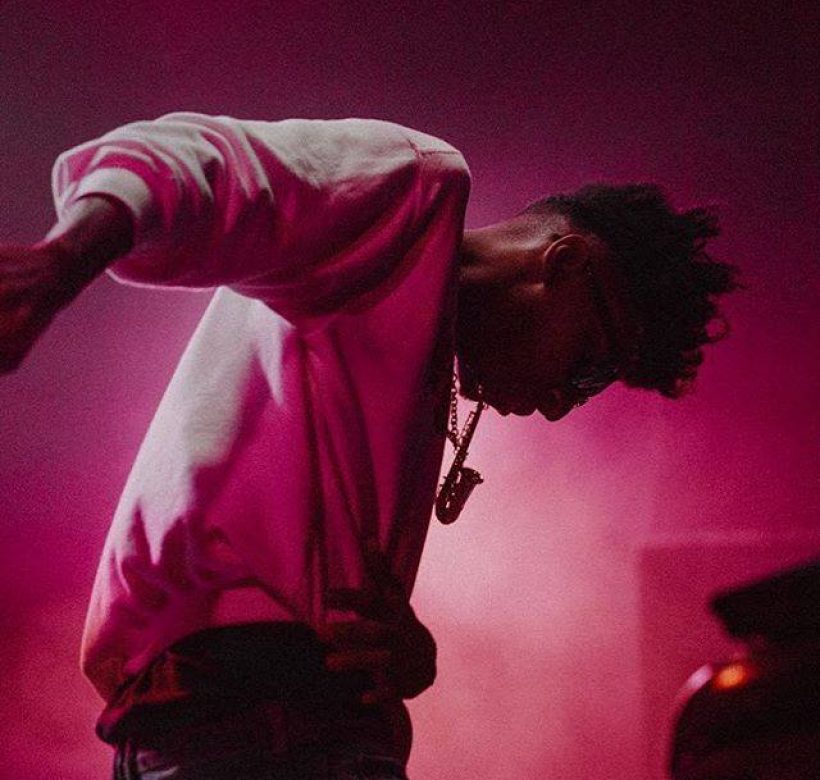
MASEGO
Plaça dels Àngels - September, 22
There are many interesting artists and concerts at the BAM Festival (Barcelona Acció Musical) within the events of the Barcelona festivities of La Mercè, among which some important groups stand out, like Mercury Rev. However, we decided to recommend the concert of Masego, an artist born in Jamaica and settled in the United States, who became known in the networks initially with his real name, Micah Davis (Masego means "blessing" in Tswana). His way of mixing house music with a saxophone and keyboards as a hobby, moved by rather curious pretensions (it seems, to impress a girl), nevertheless caught the attention of some producers. The result is a disc Loose Thoughts (2016) that, together with its subsequent themes, accumulates millions of listeners.
Defining its proposal in musical terms is not easy, as it fuses styles of the most unconcealed form, promoting rhythms and catchy melodies, which sound like an excellent soundtrack of any cosmopolitan city, just like Barcelona. The artist defines the style of his music by using combinatorics, such as trap house jazz. Labels may help but, in the end, they confirm how limited they are. The final product is always unique, and in this case rather attractive. Masego even dares to use a Beatles song... It's better to listen to it: HERE
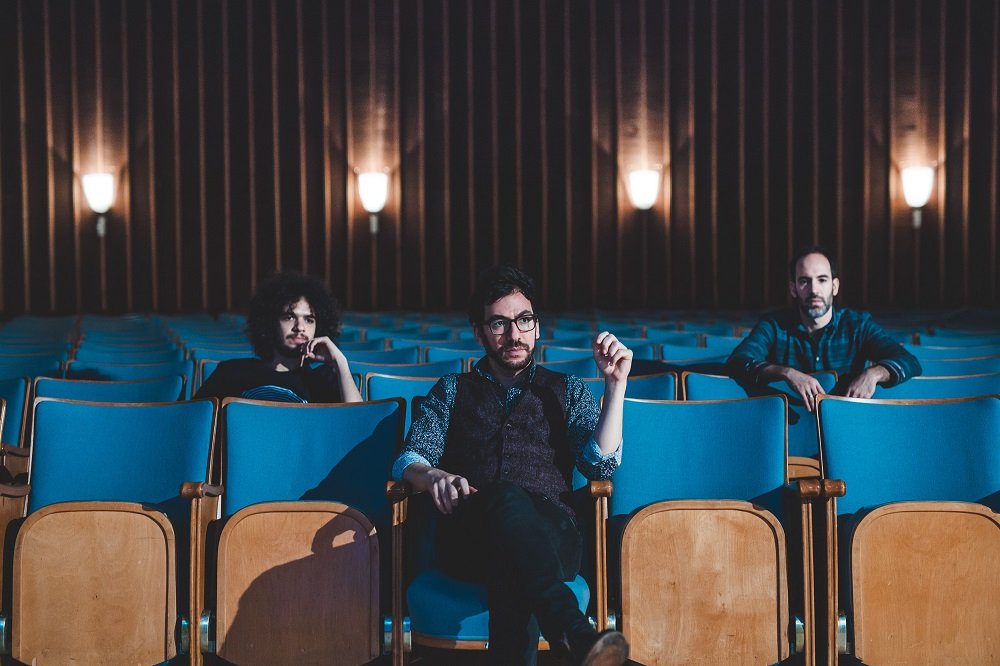
OMER KLEIN TRIO
Jamboree, September, 12
The Omer Klein Trio owes its name to the pianist, the backbone of the group, which has received several awards. Along with Haggai Cohen Milo on the double bass and Amir Bresler, drummer, Omer Klein will offer a contemporary jazz concert at the Jamboree.
A concert open to the latest trends, but without giving up the creation of melodic lines. Even if the pianist has collaborated with John Zorn, the audience should not expect to be constantly challenged. Rather than taking to the extreme the sound possibilities of their instruments (to reach an expression that questions any type of expression), something that free jazz has exploited through unpredictable twists and turns, the discourse of this combo unfolds in a more deliberate, suggestive way; starting from a priori assumable cells, which gain complexity and bring pleasant surprises to the listener. If by "jazz" we understand freedom, improvisation, open-mindedness and of course a certain way of articulating the discourse... the proposal of the Omer Klein Trio will satisfy. The organizers explain, in this sense: "Klein has made his debut record at the giant Warner Music with Sleepwalker, a captivating album, with a dose of energy and lyricism, simultaneously; an authentic example of the best contemporary tradition of jazz piano trio art".
Gustavo Dudamel
Palau de la Música, September, 18 and 19
Double date at the Palau de la Música, to start intensively the season with the presence of Gustavo Dudamel conducting the Mahler Chamber Orchestra, and extremely appealing programs, including high-voltage symphonies on both concerts.
September 18th is the day dedicated to two “fourths”: Schubert's "Tragic", called thus for its eventually shady accents -but, above all, due to the feeling of destiny that pervades it- and, in the second part, the last symphony composed Johannes Brahms, an imposing orchestral construction, with passages so vibrant as the final movement, that integrates a baroque compositional style -the passacaglia- in the romantic spirit. The next day, September 19th, you can hear Schubert's Third Symphony, undoubtedly lighter and more celebratory, from its initial bars, as well as one of Gustav Mahler's most popular symphonies, with which it is perfectly paired: the Fourth Symphony is a kind of journey through nature, induced from the very beginning by the sound of the postillion, which ends with the angelic voice of the soprano, on this occasion Golda Schultz. The amount of registers and humours that accumulates -either rhythmic or ecstatic passages- turn this symphony into a characteristic work of the Mahlerian genius being at the same time very enjoyable for the public. Undoubtedly, the visit of Dudamel supposes, again, a fantastic opportunity to appreciate high quality interpretations.
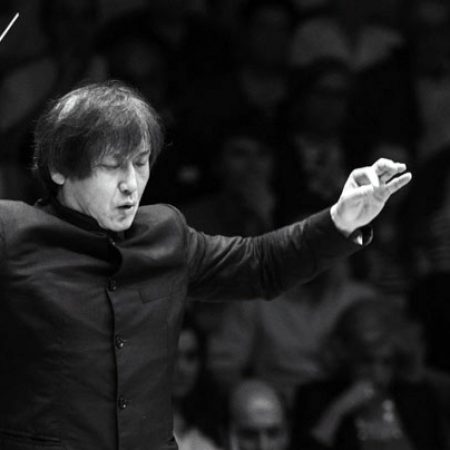
MAHLER’S FIFTH SYMPHONY
L'Auditori, September, 28, 29 & 30
The musical season of the Symphonic Orchestra of Barcelona and National of Catalonia (OBC) opens at the Auditori with one of the symphonies that left a more decisive footprint in the history of Western culture
-with Beethoven's permission- as is the Gustav Mahler's Fifth Symphony in C minor, which was eventually used as the soundtrack to Lucchino Visconti's Death in Venice. The world that builds is a confluence of sonorities and traditions, articulated in five exciting movements; from the initial declamation of the trumpet, which will give way to a march, to the exultant end that the numerous musicians on stage shall exploit at their best, not forgetting obviously the ecstatic Adagietto, a passage that makes the horizon falter in a framework of supreme beauty. The OBC’s head conductor, Kazushi Ono, is a specialist in this type of symphonic pieces, works of practically unsurpassed magnitude, that put into play resources and varied registers of the orchestral ensemble, from a variety of percussion elements to metal fanfares, not forgetting the texture and precision required of the sections of strings or the reminiscent interventions of the wood instruments. In the first part, as an introduction, the audience will also enjoy a symphonic composition by Robert Schumann -the Concert piece for 4 horns and orchestra, op. 86- that does not show the name of symphony because of the role of the mentioned instruments and the freedom of the movements that compose it, being characterized by an acoustic fullness of the brass section that will be rediscovered in Mahler’s composition.

Nakany Kanté: Naka
La Mercè, September, 21
Evening devoted to African music, a prolific and very influential music in so many internationally successful artists, which is celebrated here with three fantastic concerts. The artists invited on the occasion of the Barcelona festivities known as La Mercè have performed on the principal stages around the world and have an accredited career.
The most obvious case is possibly that of the Baobab Orchestra, whose performance at the London-based Barbican we recommended a few months ago. A group that in one of their most successful records claimed, with a pinch of irony, to be "specialist in all styles" and that -without margin for doubt, and still with good humour- guarantees a good time for those attending the event. Almost impossible not to be carried away by the rhythms and animosity of the band, that will have been preceded by the Guinean Nakany Kanté (22h). Artist currently installed in Barcelona, her album Naka was considered by the magazine Mondo sonoro as the best national record of 2016 within the World Music category. To close the evening, in the early hours of the morning, will act Seun Kuti (1.30 h), son of Fela Kuti, who had to fill the void left by him after his death, and continue to lead the band Egypt 80, "staying faithful -explain the organizers- to the social and political slogans of a committed artist, who has mixed Yoruba sounds with jazz and funk ".
< LAST MONTH NEXT MONTH >
EXHIBITIONS
EXHIBITIONS
01 / 09 / 18
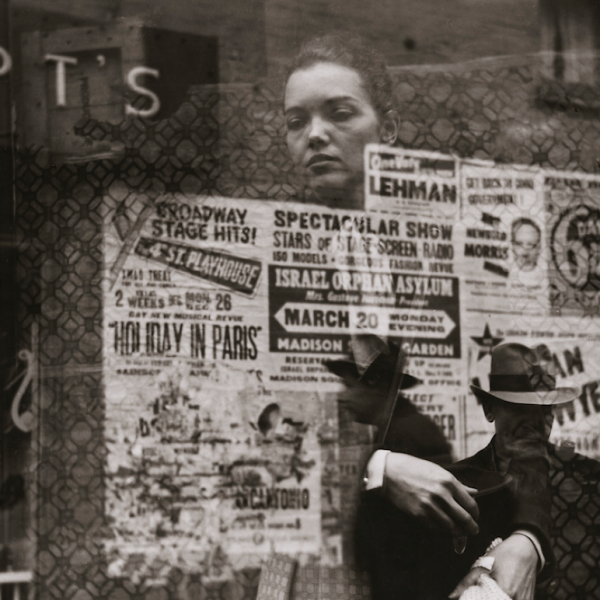
Saul Leiter, In Search of Beauty
Foto Colectania, until October, 21
The title of Saul Leiter’s exhibition, In Search of Beauty, is both comprehensible and misleading, if understood in a plain sense. Since the experienced photographer has not been looking for prototypical beauty in the last decades, but rather has created it with his own gaze. His way of composing the image evidences that search, being his inherent creativity due to a basically nonconformist way of proceeding. At Foto Colectania, organizers of this fantastic exhibition, they explain that "his photographic language is that of abstraction: it compresses spatial dynamics, obstructs lines of vision and avoids a centred perspective". The titles of the photographs usually point to a key detail, a minor element, a priori, which nonetheless brings magic to the totality of what is represented.
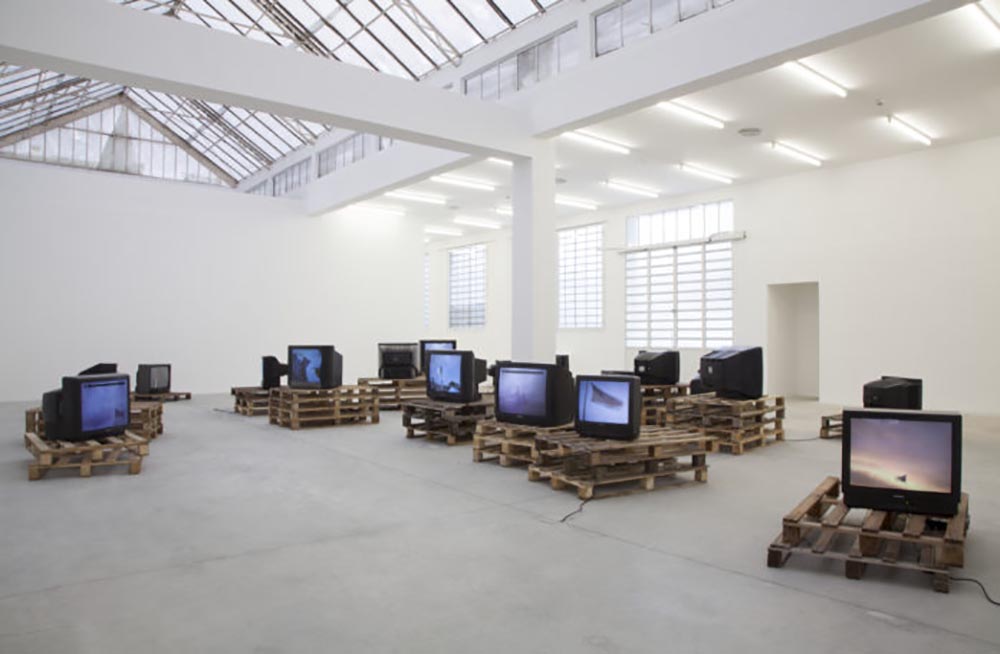
Turbulences
Caixaforum Barcelona, until October, 21
The role of contemporary art is far from being merely aesthetical, or even cosmetic, if by that we understand a pleasant way of reaffirming ourselves in the surrounding world. The organizers of the exhibition at the Caixaforum,
who have chosen the term "Turbulences" as a title for the exhibition, make it very clear, by stating -in the form of a definition- that "turbulence causes shaking and conveys restlessness. It is a sudden movement that gets us to awaken the conscience and sharpen the senses in front of the what surrounds us". The works of the artists are dissimilar in format and generationally, but they coincide in raising questions and causing a breakdown in some of the certainties and prejudices that we all accumulate. They come from "la Caixa" Collection of Contemporary Art, which in the last thirty years has been bringing together works by the most creative artists of our time, and which promotes a critical reflection, focused on the understanding and improvement of the world in which we live.
Picasso's Kitchen
Museu Picasso, until September, 30
Last month to enjoy the exhibition "Picasso’s Kitchen", an exhibition in which synaesthesia is artistically posited -in the collaboration of the senses sight / taste- to arouse in the spectator aesthetic experiences of high calibre.
As it is known, one of the most characteristic themes of Picasso's work is food. Beyond the tradition of still life paintings, in which exotic foods or products of a closest origin are represented, in Picasso's work, its preparation for consumption has a relevant role, which incorporates and transcends the decorative character, or the expression of an abundance traditionally used as memento mori (for example, in Caravaggio’s basket fruit, with the presence of insects that are feed of the food). The experimentation inherent in Picassos’s pictorial technique shows in a new light the products or kitchen instruments, extremely familiar, which allows to become aware of the delicious and delicate artifice that is inherent in the culinary art. Not in vain -the organizers note, on the website that- "the show is enriched by the exceptional collaboration of Ferran Adrià, who will establish a dialogue between the creative process of Picasso and the contemporary culinary creation".
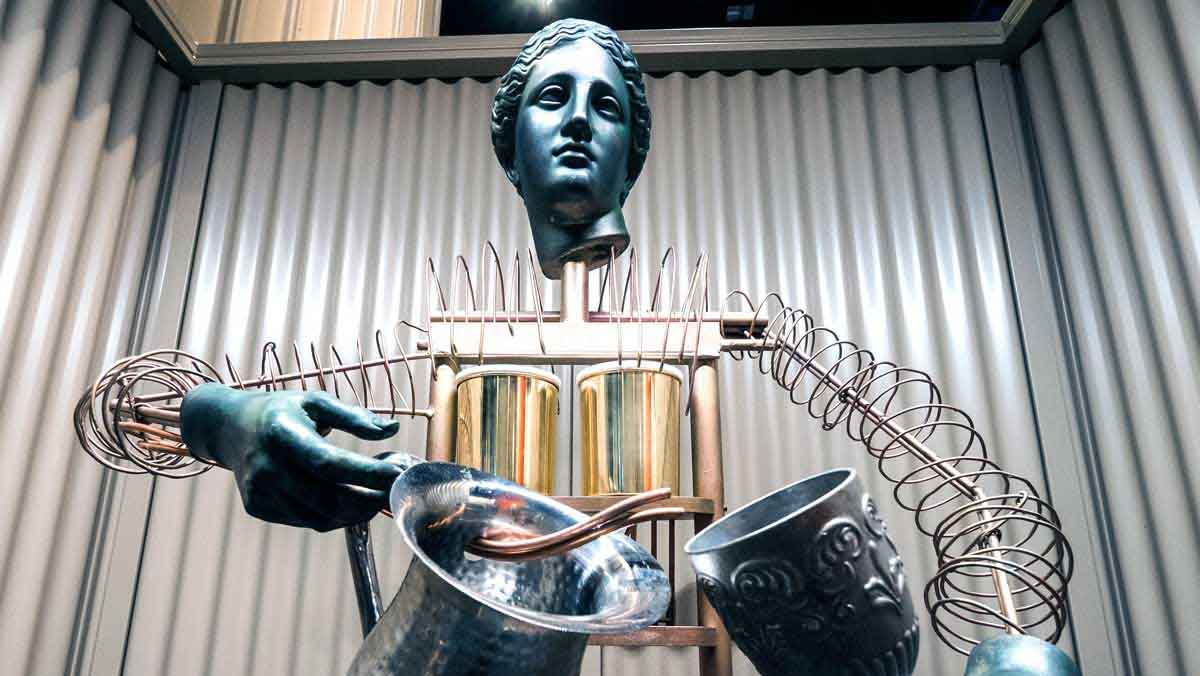
Robots, humans and machines
Cosmocaixa, until January'19
Robotics, the art of programming artificial devices to perform human tasks, is not a future reality, chimerical, or a type of condemnation that leads necessarily to some of the dystopian visions conceived in the past, from Metropolis to Westworld, obviously going through Blade Runner.
As the exhibition at Cosmocaixa teaches, it is indeed a present reality, inserted in our lives in ways that are sometimes unconscious and that are certainly projected into the future, opening up a host of possibilities. Not only to make life easier, or comfortable, but to perform tasks in a more efficient and predictable way. After all, machines are determined to act in the absence of external emotions and constraints (leaving aside the surprisingly case of Hal 2000, the on-board computer of the 2001. A Space Odissey, whose homicidal tendencies seem to rest on a bug, an error in the system that causes the pathological feeling of incomprehension and lack of appreciation of its qualities). In any case, the perfection to which one aspires with the creation of robots -for jobs as diverse as cleaning or surgery- does not imply, however, the complete absence of moral dilemmas, as it has been suggested in the design of self-directed cars, in the event of a collision. The visitor of the exhibition will be faced to a series of fundamental questions about the relationship between humans and robots, about a possible collaboration, confluence and even confusion between both, as many works of art have illustrated in the last centuries.
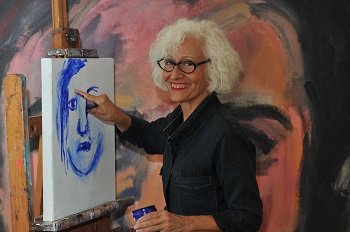
Why? Carme Solé Vendrell
Palau Robert, until September, 24
Carme Solé Vendrell's career as an illustrator of children's publications turns 50. During these years, she has also shown human qualities through her defence of the rights of children.
In the Palau Robert, until September 24th, you can admire some of the hundreds of volumes -the total reaches 800, according to the website- that she has illustrated, as well as other works in different media, always with the protagonism of children. The facade of the Palau Robert shows a series of faces, as well as a hurtful and yet necessary question, which raises the incomprehensible reality of child abuse: why? In addition to her commitment to protecting childhood, Carme Solé Vendrell has illustrated texts by authors such as Mercè Rodoreda, Salvador Espriu, Pere Calders, Miquel Martí i Pol and Gabriel García Márquez.
< LAST MONTH NEXT MONTH >
Sign up for the newsletter and get cultural events delivered to your inbox.
Information on Data Protection
Responsible: The New Barcelona Post (Foment del Treball).
Purpose: Manage the sending of newsletters by email with information about upcoming planned activities.
Legitimation: Consent of the interested party.
Targets: The request will add the data to the MailChimp system, in order to send the newsletters by e-mail to the user.
Rights: You have the right to access, rectify and delete this data, as well as other rights that are also explained in the privacy policy.
Data retention: Until the user requests its deletion.
Additional information: For additional and detailed information on the privacy policy, see https://thenewbarcelonapost.com/en/privacy-policy/.




